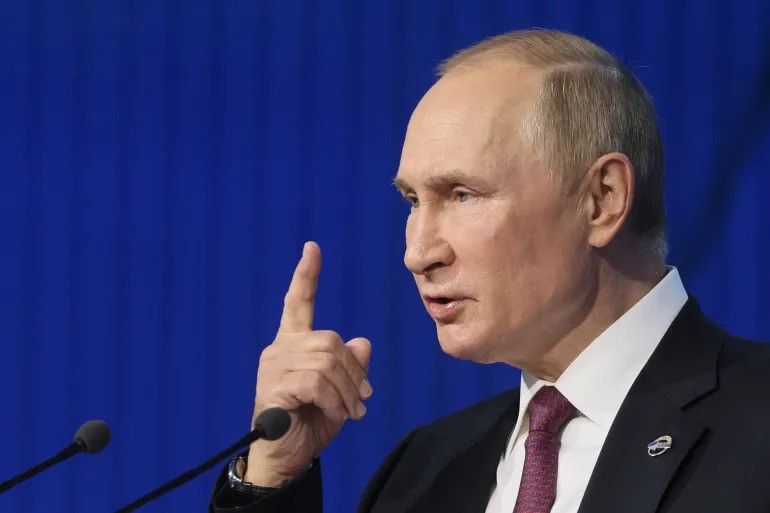Vladimir Putin has heightened concerns of of war with NATO by issuing threats to the EU nations bordering Kaliningrad during a surprise visit to the Russian exclave.
The Russian president made an unanticipated trip to the territory, situated between Lithuania and Poland, amid escalating fears that it could become a potential hotspot for future hostilities.
Putin seemed to provoke the Baltic nations by flying near Estonia and skirting the coasts of Latvia and Lithuania in his presidential plane, known as the “Flying Kremlin,” before landing in Kaliningrad.
Read more: Putin ready to seize more Ukrainian territory to prevent attacks on border regions
Fighter jets were scrambled off the eastern coast of the Swedish island of Gotland as Putin approached the Baltic Sea.
Putin’s criticism of Kaliningrad’s neighbors
During an address to students at the Kant Baltic Federal University, Putin criticized Kaliningrad’s neighbors for removing Soviet war memorials, calling it “remarkable ignorance and a lack of understanding of their surroundings.”
Dmitry Peskov, the Kremlin’s spokesperson, stated that the visit aimed to promote “development” and was not intended as a warning to Nato countries.
He emphasized that when the president visits Russian regions, it is primarily to focus on the country’s development and regional progress.
Despite the Kremlin’s claims, the timing of Putin’s visit to Europe, amidst heightened tensions between Russia and the West, holds significance.
Rishi Sunak ruled out conscription after the Army chief warned civilians might need to join the fight against Russia if a war broke out.
In January, Boris Pistorius, the German defense minister, speculated that Putin could declare war on NATO within the next five to eight years.
Camille Grand, an analyst with the European Council on Foreign Relations, interpreted Putin’s visit as a message reminding the people of Kaliningrad that they are part of Russia and signaling that the Baltic Sea should not be considered a Nato domain.
Estonia, Latvia, and Lithuania have agreed to establish a joint Baltic defense zone along their borders with Russia and Belarus. They have cited the need for enhanced protection following the conflict in Ukraine. They plan to construct anti-mobility defensive installations and enhance missile-artillery cooperation.
Hanno Pevkur, the Estonian defense minister, highlighted the importance of border defense structures in light of the conflict in Ukraine.
Kaliningrad’s strategic significance
Military analysts regard Kaliningrad as a potential flashpoint for conflict between Russia and NATO. Moscow deployed advanced warplanes with hypersonic missiles to the region and threatened to station nuclear-capable missiles there.
NATO views the Suwalki Gap, a 60-mile stretch between Poland and Lithuania, as a strategic vulnerability because it connects Kaliningrad with Belarus, where Russian troops are stationed.
An international arrest warrant has limited Putin’s overseas travel due to his alleged abduction of Ukrainian children.
Before Putin’s plane landed in Kaliningrad, a Nato reconnaissance plane from the Dutch air force circled over the Baltic Sea. Observers reportedly spotted an RAF Boeing RC-135W electronic reconnaissance aircraft and a French reconnaissance aircraft near the Kaliningrad region.
German Defense Minister Boris Pistorius warned that neither the army nor the public is adequately ready for conflict with Russia.
